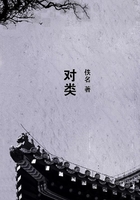There has been much debate in subsequent decades whether Darwin himself maintained that man was descended from the ape, and many writers have sought to deny it. But the lines I have quoted verbatim from the conclusion of the sixth chapter of the "Descent of Man" (1871) leave no doubt that he was as firmly convinced of it as was his great precursor Jean Lamarck in 1809. Moreover, Darwin adds, with particular explicitness, in the "general summary and conclusion" (chapter XXI.) of that standard work ("Descent of Man", page 930.):
"By considering the embryological structure of man--the homologies which he presents with the lower animals,--the rudiments which he retains,--and the reversions to which he is liable, we can partly recall in imagination the former condition of our early progenitors; and can approximately place them in their proper place in the zoological series. We thus learn that man is descended from a hairy, tailed quadruped, probably arboreal in its habits, and an inhabitant of the Old World. This creature, if its whole structure had been examined by a naturalist, would have been classed amongst the Quadrumana, as surely as the still more ancient progenitor of the Old and New World monkeys."These clear and definite lines leave no doubt that Darwin--so critical and cautious in regard to important conclusions--was quite as firmly convinced of the descent of man from the apes (the Catarrhinae, in particular) as Lamarck was in 1809 and Huxley in 1863.
It is to be noted particularly that, in these and other observations on the subject, Darwin decidedly assumes the monophyletic origin of the mammals, including man. It is my own conviction that this is of the greatest importance. A number of difficult questions in regard to the development of man, in respect of anatomy, physiology, psychology, and embryology, are easily settled if we do not merely extend our progonotaxis to our nearest relatives, the anthropoid apes and the tailed monkeys from which these have descended, but go further back and find an ancestor in the group of the Lemuridae, and still further back to the Marsupials and Monotremata. The essential identity of all the Mammals in point of anatomical structure and embryonic development--in spite of their astonishing differences in external appearance and habits of life--is so palpably significant that modern zoologists are agreed in the hypothesis that they have all sprung from a common root, and that this root may be sought in the earlier Palaeozoic Amphibia.
The fundamental importance of this comparative morphology of the Mammals, as a sound basis of scientific anthropology, was recognised just before the beginning of the nineteenth century, when Lamarck first emphasised (1794)the division of the animal kingdom into Vertebrates and Invertebrates.
Even thirteen years earlier (1781), when Goethe made a close study of the mammal skeleton in the Anatomical Institute at Jena, he was intensely interested to find that the composition of the skull was the same in man as in the other mammals. His discovery of the os intermaxillare in man (1784), which was contradicted by most of the anatomists of the time, and his ingenious "vertebral theory of the skull," were the splendid fruit of his morphological studies. They remind us how Germany's greatest philosopher and poet was for many years ardently absorbed in the comparative anatomy of man and the mammals, and how he divined that their wonderful identity in structure was no mere superficial resemblance, but pointed to a deep internal connection. In my "Generelle Morphologie"(1866), in which I published the first attempts to construct phylogenetic trees, I have given a number of remarkable theses of Goethe, which may be called "phyletic prophecies." They justify us in regarding him as a precursor of Darwin.
In the ensuing forty years I have made many conscientious efforts to penetrate further along that line of anthropological research that was opened up by Goethe, Lamarck, and Darwin. I have brought together the many valuable results that have constantly been reached in comparative anatomy, physiology, ontogeny, and palaeontology, and maintained the effort to reform the classification of animals and plants in an evolutionary sense.
The first rough drafts of pedigrees that were published in the "Generelle Morphologie" have been improved time after time in the ten editions of my "Naturaliche Schopfungsgeschichte" (1868-1902). (English translation; "The History of Creation", London, 1876.) A sounder basis for my phyletic hypotheses, derived from a discriminating combination of the three great records--morphology, ontogeny, and palaeontology--was provided in the three volumes of my "Systematische Phylogenie (Berlin, 1894-96.) (1894 Protists and Plants, 1895 Vertebrates, 1896 Invertebrates). In my "Anthropogenie"(Leipzig, 1874, 5th edition 1905. English translation; "The Evolution of Man", London, 1905.) I endeavoured to employ all the known facts of comparative ontogeny (embryology) for the purpose of completing my scheme of human phylogeny (evolution). I attempted to sketch the historical development of each organ of the body, beginning with the most elementary structures in the germ-layers of the Gastraea. At the same time I drew up a corrected statement of the most important steps in the line of our ancestral series.













